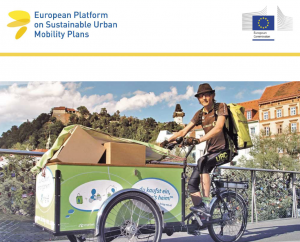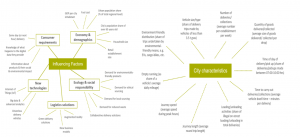Since the first edition of the SUMP Guidelines was published in late 2013, it has acted as the main European reference document for urban transport and mobility practitioners involved in the development and implementation of Sustainable Urban Mobility Plans (SUMPs).
Many cities in Europe and around the world have developed SUMPs, while numerous EU-funded projects and programs have contributed valuable knowledge that helped cities to develop this new generation of mobility plans.
New trends in urban mobility
Whilst the Guidelines continue to be used extensively, major new trends in many areas of urban mobility have emerged and a wealth of practical SUMP experience has been acquired over the last few years. This meant it was time to rethink and update the original Guidelines. A comprehensive update process of European SUMP guidance was started in 2018, including a revision of the Guidelines itself, as well as the development of a range of complementary guides on specific aspects of SUMP.
The second edition of the SUMP Guidelines
Publication of the second edition of the European SUMP Guidelines marks an important milestone in the take-up of a new planning culture in Europe. This comprehensive revision aims to integrate the dynamic developments in many areas of urban mobility and the rich experience of implementing the concept of Sustainable Urban Mobility Planning since 2013.
This public draft is the result of an intense one-year stakeholder engagement process, coordinated by main authors Rupprecht Consult and led by a special Editorial Board, which includes DG MOVE, the CIVITAS SUMP projects, Eltis, INEA, DG REGIO, JASPERS, and leading mobility researchers. It has been developed and validated in close cooperation with the SUMP community. Starting with a large survey and dedicated session at the SUMP Conference 2018, a number of workshops with practitioners and other experts from all over Europe have taken place. By involving several major city networks closely in the update, special care was taken to include feedback from all types of cities and regions.
Sustainable urban logistics planning
Included in the SUMP guideline is sustainable urban logistics planning (SULP). Urban freight transportation (UFT) planning is a complex process, and Public authorities generally have less knowledge about and capacity regarding specific issues than concerning passenger mobility, while private companies that are involved in organizing and implementing urban freight distribution have knowledge of the technical aspects of the subject.
The complexity of a sustainable planning process is even greater since the process should involve a variety of private actors from a very fragmented environment with different and often conflicting needs and goals, and achieve a balance between the industrial requirement for high efficiency and low-cost operations, and societal requirements for low CO2 and high safety and sustainability. The complexity of organizing urban freight distribution is driven by the vast range of activities resulting from relationships among a variety of actors with different and often conflicting needs and goals, and by a number of negative environmental consequences and social effects, such as congestion, air and noise pollution, and an increase of safety hazards.
As a result of the above factors, it is, therefore, challenging to achieve actors’ collaboration and participation in this planning process and to conclude upon measures that can be successful and largely adopted in different urban contexts.
Source: Eltis


